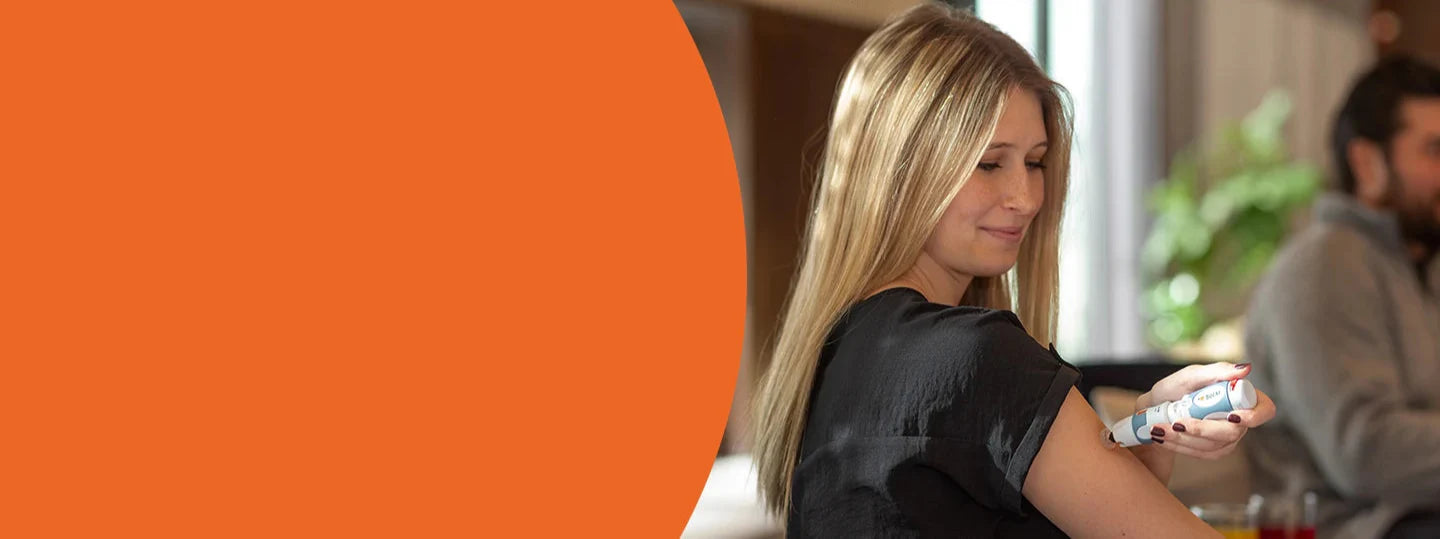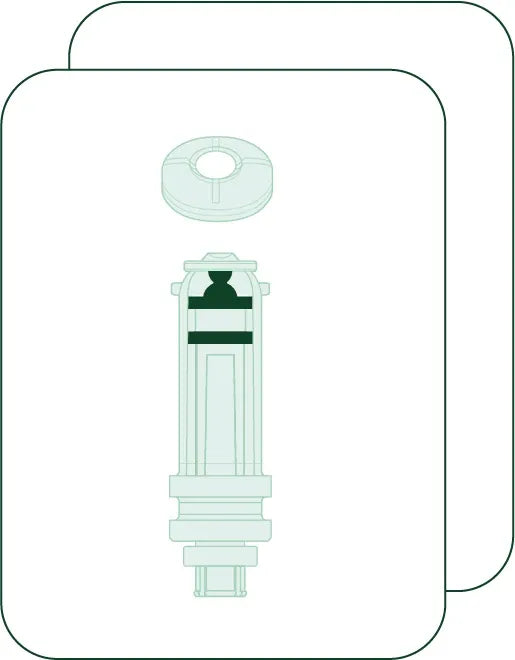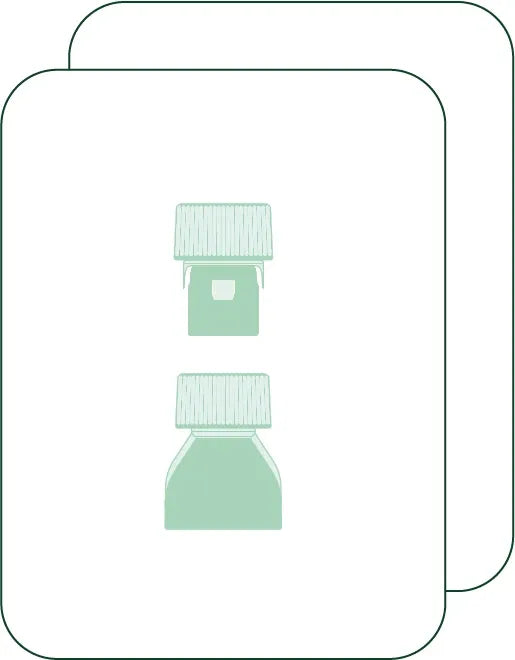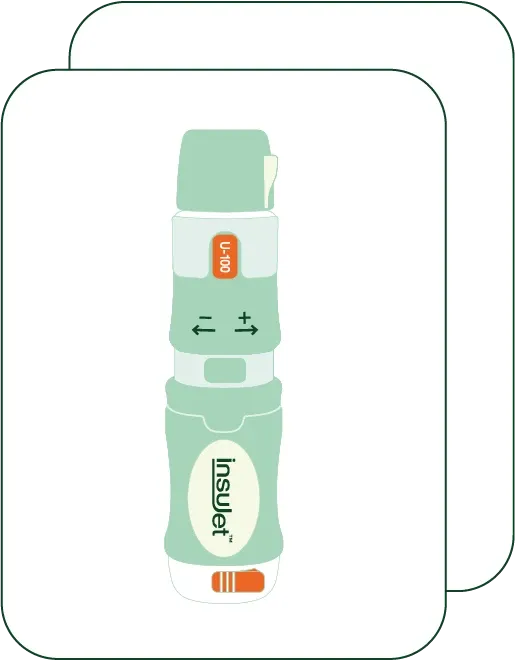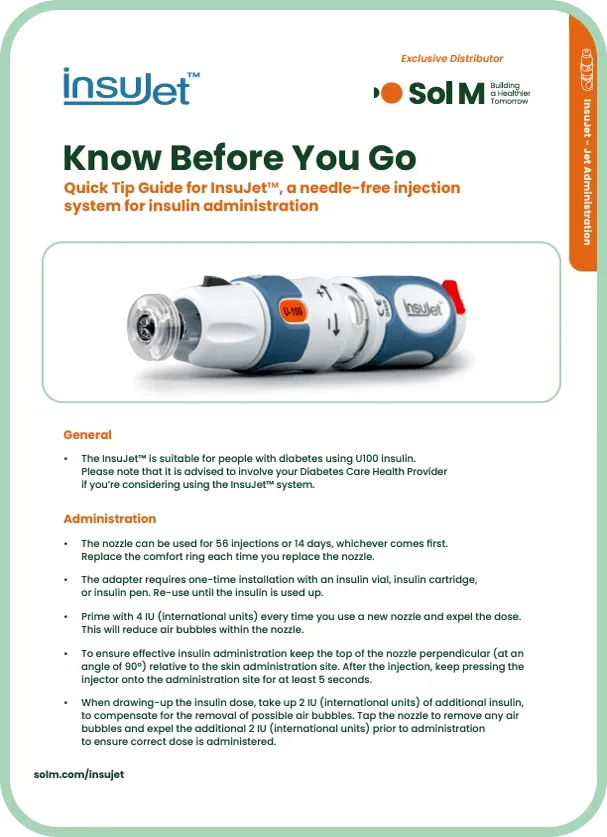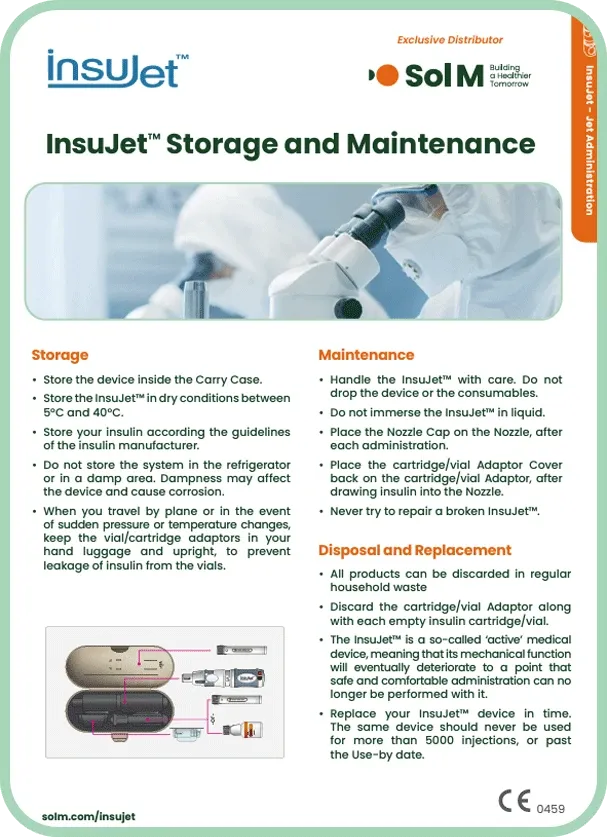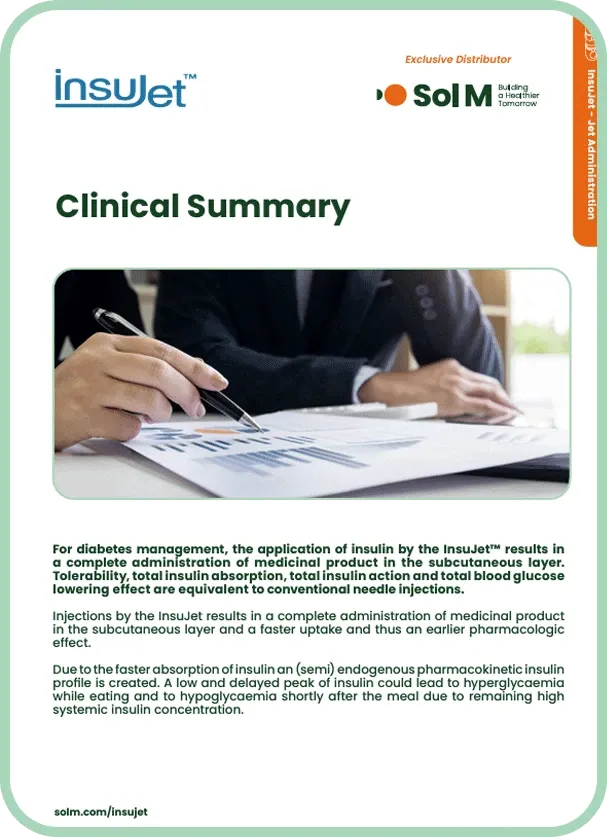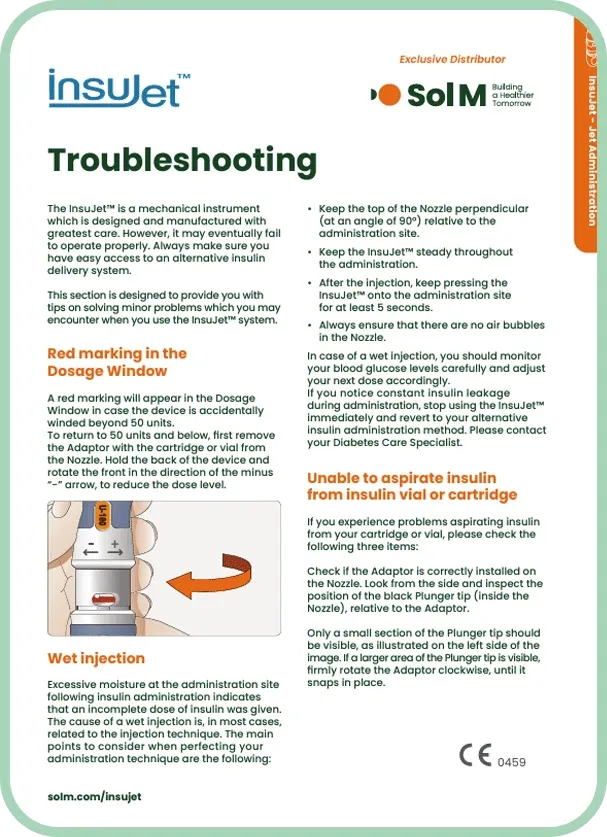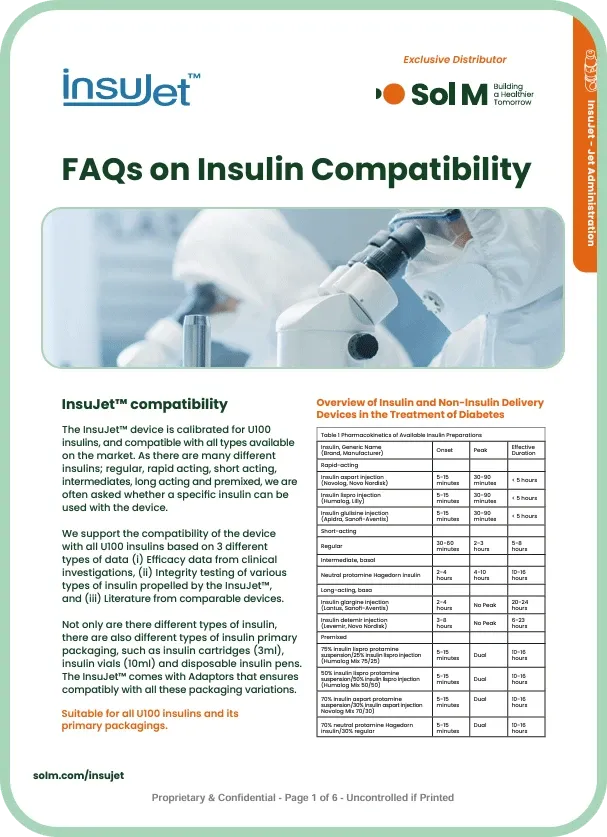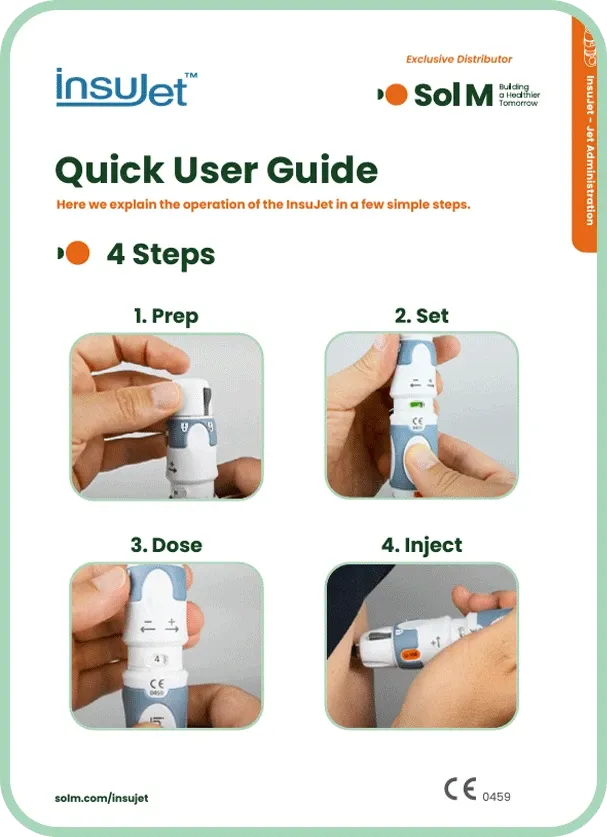A step-by-step video guide
InsuJet™ packaging contents
This video shows the unboxing of the InsuJet™ packages as you will receive them. And it shows what to pay special attention to.
Product Overview
This video shows each product separately and what each part is used for.
Installing a 3ml adaptor
This video goes through the step-by-step process of installing a 3ml adaptor on an insulin cartridge.
Installing a 10ml adaptor
Installing the InsuJet™ Nozzle
This video goes through the step-by-step process of unboxing, replacing and installing a nozzle on the injector and how to get it ready for use.
Charging the InsuJet™
This video goes through the step-by-step process of charging the InsuJet™ by winding it until it is ready for the next step.
Priming the InsuJet™
This video goes through the step-by-step process of priming the InsuJet™ with a 3ml adaptor.
It shows the important step of insuring no air-bubbles are included and getting the InsuJet™ ready for administration.
Taking up insulin from 3ml cartridge
This video goes through the step-by-step process of taking up insulin with a 3ml adaptor. What steps to pay special attention to and how to set your perfect dose.
Taking up insulin from 10ml vial
This video goes through the step-by-step process of taking up insulin with a 10ml adaptor. What steps to pay special attention to and how to set your perfect dose.
Administer insulin
This video goes through the step-by-step process of how to administer insulin with the InsuJet™ Injector.
Using a comfort ring
This video shows how to install a InsuJet™ Comfort ring on the InsuJet™ Nozzle and how to use it properly.
Replacing the InsuJet™ Nozzle
This video goes through the step-by-step process of replacing the InsuJet™ Nozzle.
Using insulin from a disposable penfill
This video goes through the step-by-step process of using insulin from a disposable penfill with the InsuJet™ 3ml adaptor.
Storage
This video illustrates best practices for storing your InsuJet™ Injector and consumables.
Troubleshoot: Air inside nozzle
This video goes through the step-by-step process of how to get rid of an air bubble inside the InsuJet™ Nozzle.
Troubleshoot: Unable to install the nozzle
This video goes through the step-by-step process of how to install the InsuJet™ Nozzle and possible difficulties.
Resources
Insulin Calculator
Timeframe
3ml Disposable insulin pen
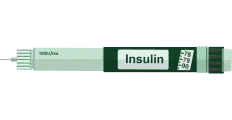
Number of products used:
3ml insulin catridge
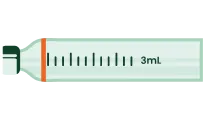
Number of products used:
10ml insulin vial

Number of products used:
You can buy:
InsuJet™ Injection Device (1 device)
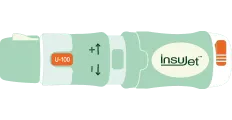
x1 pcs
InsuJet™ 3mL adaptor

x0 pcs
InsuJet™ 10mL adaptor

x0 pcs
InsuJet™ nozzle
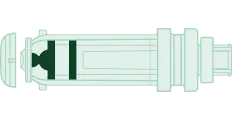
x3 pcs
Replace nozzle when adaptor is replaced (Recommended)*


